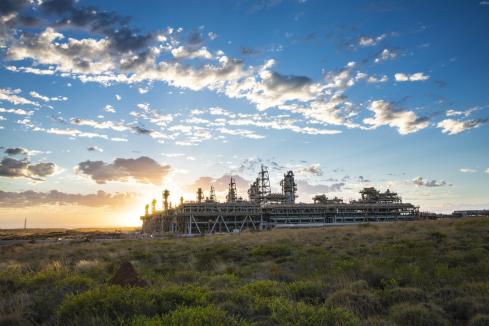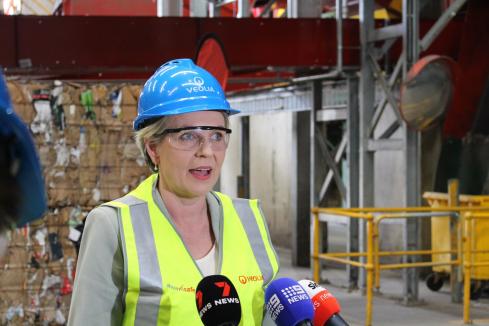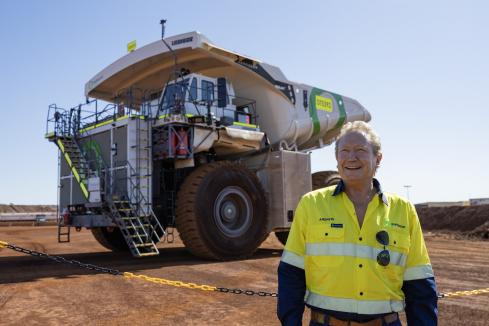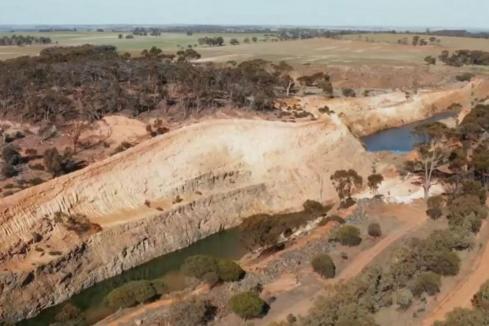WA’s emerging mining companies delivered spectacular gains last financial year, for the astute investors who picked the right stocks.


TAKE your pick; it could be a coal project in Mongolia, a copper discovery in the Gascoyne, a new gold mine in Africa, even a mineral sands project in South Australia.
These projects have been the driving force behind some of Western Australia’s best-performing companies over the past five years, according to WA Business News’ annual shareholder returns survey.
The best performers are mostly on the path to developing new projects, which have the potential to be company makers.
In some cases, such as Ampella Mining, Sandfire Resources and Regis Resources, these project opportunities flow from spectacular exploration results.
Other companies have reinvented themselves by acquiring early stage projects that hold great potential – among them Coalspur Mines, Aurora Oil & Gas, C@ and Medical Corporation Australasia.
Iluka leads blue chips
Among the state’s blue chip stocks, the clear stand-out was long established mineral sands miner Iluka Resources, which has enjoyed a remarkable revival during the past year, helped, like many other mining companies, by significant gains in commodity prices.
In the year to June 30 2011, Iluka delivered a total shareholder return (TSR) of 263 per cent.
TSR incorporates all factors that affect returns to shareholder, namely share price movements, dividend payments, and any other corporate event, such as bonus share issues or share splits.
In Iluka’s case, the biggest driver has been the strong run-up in its share price, which nearly tripled over the year to June 30, to $16.78.
Since then, its share price has jumped as high as $19, and is currently sitting around $17.80.
As well as high commodity prices, Iluka’s financial performance has been helped by a major restructuring under managing director David Robb.
The restructuring included the closure of high-cost operations (mostly in WA) in favour of new, low-cost mines in South Australia and Victoria.
Ironically, commodity prices have risen to such an extent that Iluka decided last month to reopen one of those high-cost mining operations, at Eneabba north of Perth.
The big gains last year mean that patient Iluka investors are looking good; the company has delivered a TSR of 53 per cent per annum over the past three years and 25 per cent a year over the past five years.
All Ordinaries
The returns achieved by Iluka look particularly impressive when compared to broader market trends.
The All Ordinaries index, which tracks the price of about 500 stocks listed on the ASX, gained 7.7 per cent last financial year.
A better benchmark for this exercise is the All Ordinaries Accumulation Index, which measures total share market returns, including dividends.
It grew by 12.2 per cent in 2010-11, above the 10.3 per cent average growth rate recorded over the past decade.
Small companies (or the ‘small caps’) did best over the year, up by 13.5 per cent, followed by ‘mid caps’ with a 9.7 per cent gain. The ASX100 index rose by 6.8 per cent and the ASX50 was up 6.4 per cent.
The gains in small caps were concentrated in resources with the Small Resources Index up 23 per cent, outpacing the growth of 11 per cent in the Small Industrials.
Looking good
The returns achieved by resources stocks generally, and even by Iluka, pale next to the truly stunning returns achieved by some of the state’s junior explorers, however.
Of all WA-based listed companies, the curiously named C@ delivered the best TSR over the year to June 2011, of 1,314 per cent.
The company’s name derives from its previous business focus, of developing a chain of optical stores.
The failure of that venture prompted a new group of investors to gain control of the company and take it in a whole new direction – coal mining in Mongolia.
It is one of many WA companies to invest in the surging coal sector.
C@ announced in April an option to buy eight coal licences in the South Gobi, near China, and adjoining Ovorkhangai province in southern Mongolia.
Following the change in direction, the company’s stock price lifted from less than one cent to more than 10 cents over the course of the financial year.
It was one of four WA companies to achieve a one-year TSR of more than 1,000 per cent – AusGold, Northern Minerals and Medical Corporation Australasia (which is actually a copper explorer looking to change its name to MOD Resources) shared that achievement.
Three-year returns
The best performer for the three years to June 2011 was Ampella Mining, which had a TSR of 245 per cent per annum.
Investor support was driven by its exploration success in the West African nation of Burkina Faso.
The company recently commenced a pre-feasibility study at its Konkera gold project, and has assembled a powerful board of directors that includes prominent company director Peter Mansell as chairman, investment banker Ronnie Beevor, and mining executive Ron Renton as directors.
Other companies to achieve very strong three-year returns were copper explorers Resource & Investment and Sandfire Resources (see attachment for details).
Sandfire discovered the De Grussa copper-gold deposit two years ago near Meekatharra, and is proceeding to development.
Since then, nearly a dozen other companies have undertaken exploration activities in the same area, trying to match Sandfire’s success.
These include Resource & Investment, whose chairman Miles Kennedy was formerly Sandfire chairman.
Five-year returns
The top-performing stock over the five years to June was Coalspur Mines, which is looking to develop a new mine in Canada.
Formerly known as Xenolith Resources, the company was reinvented under the guidance of chairman Ian Middlemas.
Its Vista coal project has progressed to the point the company has commenced a bankable feasibility study.
Investors in Australia and Canada have watched its progress closely, with its share price rising from just a few cents in 2009 to about $1.95 at June 30.
Over the five years to June 2011, Coalspur delivered a market-leading TSR of 108 per cent per annum.
Top 50 stars
The keen investor support for Sandfire and Coalspur has seen both companies join the ranks of WA’s 50 largest companies.
With a market cap of about $1 billion, they have a similar value to established miners such as Independence Group and Western Areas and drilling contractor Ausdrill.
This can be interpreted in two ways – their planned projects will be lucrative, or investors prefer to back future potential over current reality.
Nearly all of the top 50 companies that have delivered the best shareholder returns in recent years are project developers.
Regis Resources commenced mining at its Moolart Well gold project last year and is proceeding with development of its larger Honeymoon Well gold project.
Regis’ board, led by chairman Nick Giorgetta and managing director Mark Clark, approved development of the project during the June quarter, with a capital cost of $109 million.
The company’s two mines are scheduled to deliver total output of 350,000 ounces, with relatively low cash costs.
That has underpinned a strong share price, and a one-year TSR of 177 per cent and a three-year TSR of 128 per cent per annum.
Another very good performer has been Aurora Oil & Gas, which is developing shale gas assets in the US.
It has achieved a one-year TSR of 355 per cent and a three-year TSR of 111 per cent.
Among top 50 stocks, the biggest bolter in the year to June 2011 was Alkane Resources.
Its soaring share price – from 25 cents to about $2.15 – delivered a TSR of 815 per cent for the year.
Alkane’s core asset is a zirconia project in New South Wales, which is the subject of a definitive feasibility study.
Underperformers
The TSR survey highlights the poor performance of the state’s largest company, oil and gas producer Woodside.
Its share price is about $40 currently, about the same price as five years ago (albeit with a spike to $66 in 2008).
In the interim, the company has paid dividends, but not enough to lift its TSR above 1 per cent for both the one-year and five-year periods.
The negatives hanging over the stock include cost and timing delays at its Pluto liquefied natural gas (LNG) project, currently under construction, and uncertainty over its ability to deliver future growth projects, such as a second gas train at Pluto and the James Price Point development near Broome.
The state’s second largest company, Wesfarmers, has also been a relatively poor performer over the past five years but started to lift last year, with a TSR of 16 per cent.


















